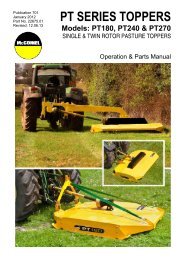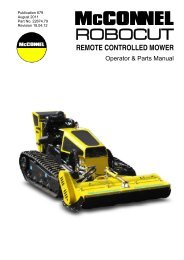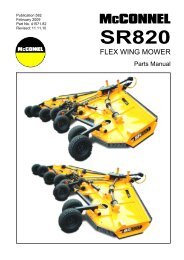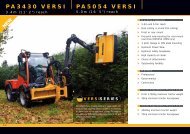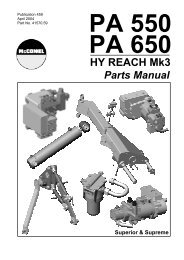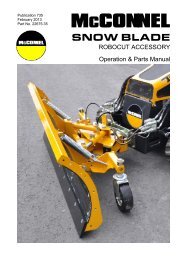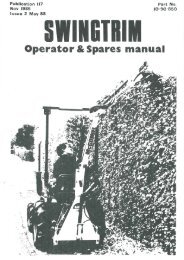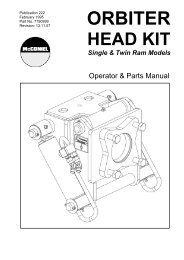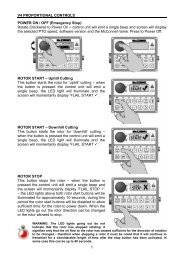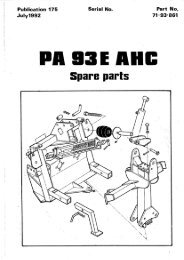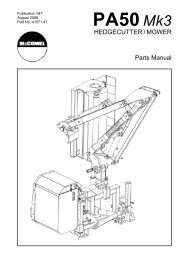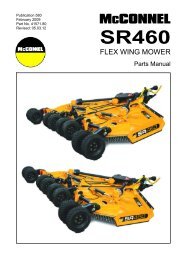You also want an ePaper? Increase the reach of your titles
YUMPU automatically turns print PDFs into web optimized ePapers that Google loves.
54<br />
Easy Drive System<br />
The revolutionary handsfree Easy Drive System (EDS) for increased verge mowing speeds<br />
›››<br />
›››<br />
›››<br />
›››<br />
›››<br />
›››<br />
EDS - The Facts<br />
Automatically follows ground contours<br />
Significantly increases working speed<br />
Provides total hands-free cruise control<br />
Reduces operator fatigue<br />
Responds 30 times a second<br />
No additional pivots, bushes, linkages,<br />
springs or weight<br />
The patented Easy Drive System (EDS) provides<br />
hands-free cruise control operation at much<br />
greater speeds, increasing both efficiency and<br />
safety.<br />
Head and lift float are automatically controlled<br />
and allow faster mowing speeds irrespective of<br />
the Power Arm reach position.<br />
The EDS system provides more accurate,<br />
responsive control over arm and<br />
flailhead float. This reduces operator<br />
fatigue and is ideal for precise verge<br />
mowing where speed and efficiency<br />
is essential.<br />
See EDS in action<br />
at www.mcconnel.com/videos/<br />
The EDS system eliminates the need for the<br />
operator to move their hand or fingers around<br />
any auxiliary functions.<br />
Unique Safety Features<br />
The EDS cruise control function incorporates<br />
a unique safety feature allowing the operator<br />
to instantly disengage/engage by touching the<br />
joystick.<br />
How it Works<br />
The EDS system comprises of two electrical<br />
sensors or potentiometers fitted on two pivot<br />
points on the Power Arm’s king post - the par<br />
allel linkage and the lift ram. The sensor in<br />
the parallel linkage pivot point monitors flail<br />
head movements by measuring the turning<br />
angle of the pin during operation, as does the<br />
sensor on the lift ram pivot point.<br />
Readings from both sensors are sent digitally<br />
to a Canbus system on the proportional<br />
control system inside the cab. This in turn<br />
informs the Power Arm’s hydraulic system<br />
how much ram pressure is required to allow<br />
the arm and flailhead to float over changing<br />
ground contours.





